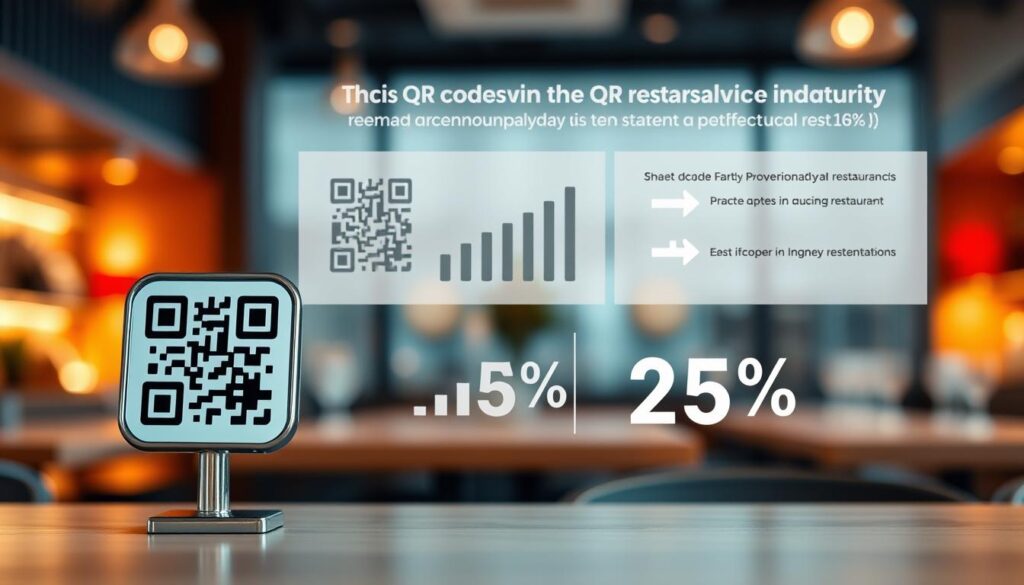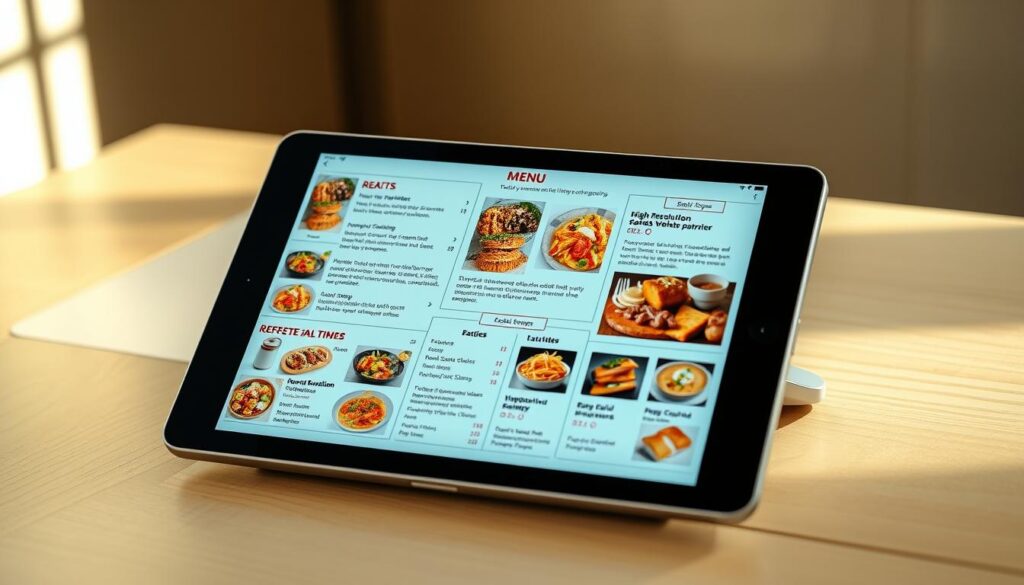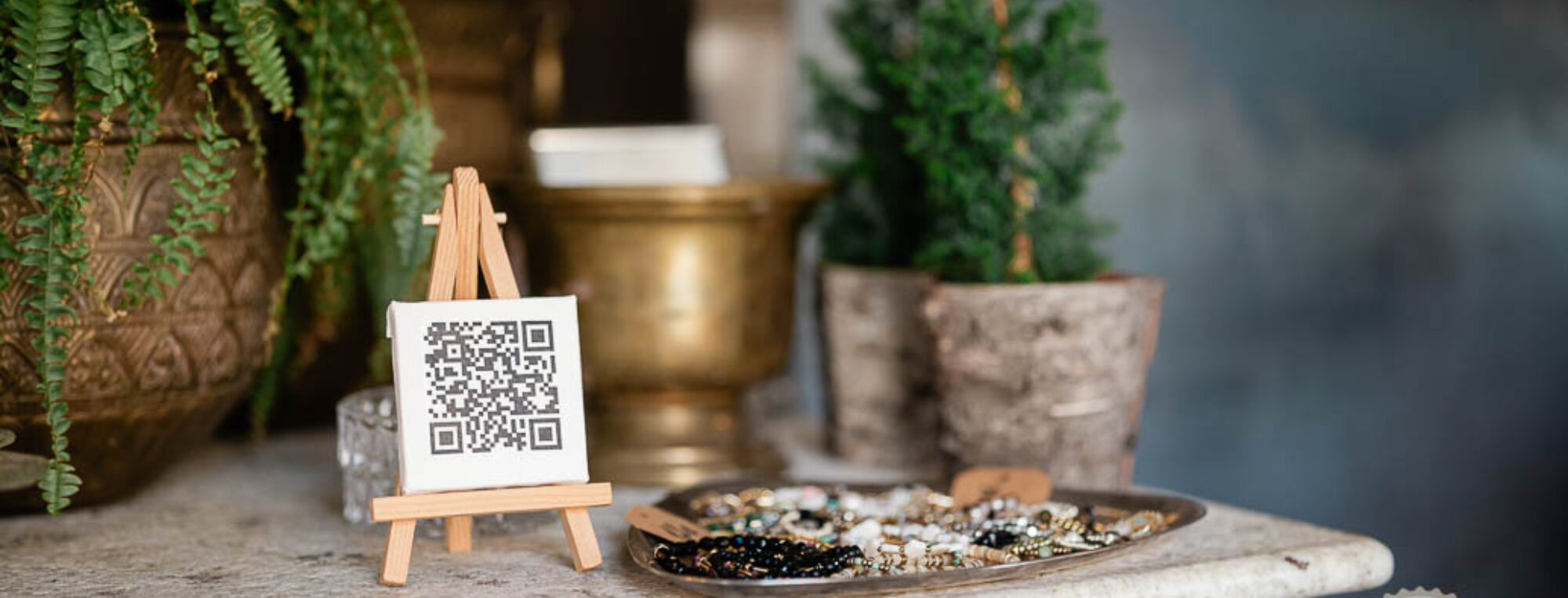„Technology is best when it brings people together.“ — Matt Mullenweg’s words perfectly capture the debate around digital menus in dining. Are they a fleeting trend or a lasting shift?
Scan-and-order systems have surged in popularity, with the market expected to hit $3.1 billion by 2025. Some see them as essential upgrades, while others miss the simplicity of paper menus.
Restaurants face a choice: embrace efficiency or prioritize tradition. Solutions like pikMenu bridge the gap, offering speed without losing the human touch. The real question isn’t just about convenience—it’s about what diners truly want.
Key Takeaways
- Digital menus are growing 20% yearly, signaling long-term potential.
- Tech-driven dining saves time but sparks nostalgia debates.
- Leading platforms blend innovation with customer comfort.
- Operators must balance speed and guest preferences.
- Data shows hybrid solutions often win customer approval.
The Rise of QR Codes in Restaurants
What started as a safety measure became a dining revolution. The pandemic pushed restaurants to adopt contactless solutions, and diners quickly embraced the change. Today, 85% of eateries use digital code menus, proving this shift is here to stay.
QR menus are no longer just a trend – they’re quickly becoming the industry standard.
Take the first step today and try PikMenu for free.

From Pandemic Solution to Industry Standard
COVID-19 accelerated trends that might’ve taken years. A 2021 Eater survey found 78% of customers prefer scanning menus. Platforms like MENU TIGER saw U.S. adoption jump 43.96%, proving demand isn’t fading.
Adoption Rates and Key Statistics
Data tells the story:
- 150% growth in U.S. usage since 2021 (PYMNTS).
- Square reports a 15% revenue boost with scan-to-pay.
- Generational split: 78% of Millennials vs. 68% of Gen Z prefer digital.
These statistics show hybrid solutions—like staff-assisted digital ordering—win long-term loyalty.
Why Restaurants Are Embracing QR Code Menus
The shift from paper menus to digital solutions is driven by tangible benefits for both businesses and customers. Beyond eliminating physical menus, these systems unlock operational efficiencies and elevate the dining experience.

Want to see how digital menus can work in your restaurant? 👉 Try PikMenu free today.
Contactless Dining and Safety Benefits
Guests appreciate reduced touchpoints. A McKinsey study found 45% perceive digital menus as more convenient. For staff, it minimizes contact during high-traffic hours, streamlining service without sacrificing hospitality.
Cost Savings and Operational Efficiency
Switching cuts printing costs by 50%, as reported by Retail Times. Dynamic pricing via a code generator allows real-time adjustments during supply shortages. London’s Moshi Moshi sushi chain slashed menu update costs by 78% post-adoption.
Enhanced Customer Experience
Personalized recommendations boost upsell opportunities by 30% (RestoConnection). Real-time data lets restaurants tailor offerings—like highlighting seasonal specials. Faster order processing (30% speed increase) keeps guests engaged.
- Reduced waste: Paper menus often end up discarded after single use.
- Instant updates: Correct pricing errors or add sold-out alerts instantly.
- Staff focus: Servers spend less time taking orders, more on guest interactions.
The Future of QR Codes in Restaurants
Restaurants are discovering powerful advantages by merging ordering and payment systems. This seamless approach cuts wait times and boosts table turnover—key for busy venues. MENU TIGER data shows hybrid models increase revenue per table by 18%.
One-Tap Transactions Are Changing the Game
Combining menus with payments saves 23% on transaction fees. Chains like Starbucks prove mobile orders now drive 31% of sales. Cryptocurrency options are emerging too, with 12% of tech-savvy diners preferring crypto payments.
Global Adoption Tells the Real Story
Asia leads with 30% annual growth, while Europe trails at 19%. The U.S. sits in between, with 99.5 million users projected by 2025. Key regional differences:
- U.S. favors all-in-one apps (e.g., scanning, paying, tipping).
- Germany prefers NFC/code combos for security.
- Japan integrates loyalty programs automatically.
The industry shift is clear: paper menus could vanish by 2027. Operators adopting these tools now will stay ahead as diners expect frictionless experiences.
How QR Codes Transform Restaurant Operations
Operational agility separates thriving restaurants from struggling ones in today’s market. Scan-based systems empower businesses to adapt instantly—whether updating specials or managing supply shortages. MENU TIGER reports venues using these tools see 15% faster table turnover, directly boosting revenue.
Real-Time Menu Updates
Imagine alerting guests about peanut allergies before they order. Digital menus make this possible. During a 2023 tomato shortage, a Chicago pizzeria updated its code menu hourly, directing customers to available dishes. Results? 24-hour sales dropped only 2% despite 60% fewer tomato-based items.
👉 Read more: Digital Menu vs Printed Menu?
Key advantages:
- Allergen flags: Highlight gluten-free or vegan options automatically
- Dynamic pricing: Adjust costs during peak hours or ingredient shortages
- Labor savings: Automated ordering reduces staff workload by 19% (Square data)
Data-Driven Decision Making
Chili’s uses scan analytics to track which dishes get abandoned in carts. This information helped them redesign combo meals, increasing upsells by $3.50 per table. With 80% of restaurants now using menu analytics (PwC), insights drive smarter choices:
- Inventory systems sync with digital menus to prevent overordering
- Peak-hour order patterns help optimize staff schedules
- Customer dwell time data improves layout designs
When the CDC reported a 65.91% seated diner decline, venues with integrated systems recovered faster. They shifted promotions instantly—proving agility beats tradition in volatile markets.
Challenges and Criticisms of QR Code Menus
Not everyone welcomes the digital shift in dining—some diners still prefer the familiarity of paper menus. Pew Research found 22% of older customers resist the change, citing comfort and tradition.
Connectivity woes also frustrate guests. A UserTesting report shows 34% complain about slow Wi-Fi or dead zones. „I just want to order, not troubleshoot my phone,“ one diner remarked.
Health concerns add to the debate. Extended screen time strains eyes, especially in dimly lit venues. For customers without smartphones, the lack of contact-free alternatives feels exclusionary.
Smart restaurants adopt hybrid models during transitions. Offering both digital and physical menus respects all guests. Brands like QR TIGER even provide offline access—scans work without internet.
Applebee’s learned the hard way. Their 2021 all-digital push failed when regulars rebelled. The chain reintroduced paper menus within months, proving flexibility wins.
- Tech barriers: Provide tablet kiosks for non-smartphone users.
- Health-first design: Use larger fonts and high-contrast colors.
- Staff training: Teach servers to assist with scanning issues.
Worried about guest resistance or tech barriers? See how PikMenu solves these challenges – try it free.
QR Codes Beyond Menus: Expanding Use Cases
Digital innovation in dining extends far beyond ordering—restaurants now unlock new ways to engage guests. These tools create seamless experiences from promotions to post-meal interactions. MENU TIGER data shows venues using multi-purpose scans see 40% higher customer retention.
Rewarding Loyalty Through Scans
Olive Garden’s scan-based program increased repeat visits by 27%. Guests earn points directly through their website when scanning table codes. Geofenced campaigns take this further:
- Send happy hour alerts when users enter a 1-mile radius
- Trigger birthday rewards via social media connections
- Display AR menu previews for limited-time specials
VoucherCloud confirms QR coupons have 40% higher redemption than paper alternatives. This saves 23% on traditional marketing costs.
Turning Meals Into Conversations
Chili’s implemented post-meal surveys via scan, achieving a 63% response rate (Qualtrics). Their system asks three quick questions when paying, gathering real-time feedback. Other creative integrations include:
| Feature | Traditional Method | Scan Solution |
|---|---|---|
| Customer Surveys | 3% response rate | 63% response rate |
| Game Promotions | $2.50 print costs per table | $0.15 digital cost |
| Entertainment | Kids‘ coloring pages | Interactive AR games |
Table-side entertainment keeps families engaged longer. One pizzeria reported 18% higher dessert sales after adding trivia games accessible via scans.
Case Studies: Successful QR Code Implementations
From burgers to burritos, brands win with smart scanning. These chains prove digital tools boost sales while keeping guests happy.
Shake Shack’s Order-Ahead Triumph
Their mobile orders jumped 38% after adding scan-to-order. Guests skip lines by pre-ordering via the restaurant menu before arriving. Average ticket size grew $1.80 with upsell prompts.
Chipotle’s $2.4B Digital Engine
Digital revenue now drives 45% of sales. Their system remembers favorite orders—92% of users reorder the same meal. Customization options increased add-ons by 27%.
| Brand | Improvement | Key Feature |
|---|---|---|
| Starbucks | 26% mobile orders | Auto-replenish loyalty points |
| Sweetgreen | 18% faster service | Compostable table tents with code generator |
| Domino’s | 11% fewer complaints | „Carryout insurance“ to create code for remakes |
MENU TIGER’s Global Reach
Multi-language support helped a NYC pizzeria increase tourist orders by 33%. Patrons scan to view menus in 12 languages.
Why These Work
Each solution focuses on real pain points:
- Speed for busy professionals (Starbucks)
- Sustainability for eco-conscious diners (Sweetgreen)
- Risk-free experiences (Domino’s)
QRTIGER’s 300% client growth since 2020 shows this isn’t luck—it’s strategy. Your restaurant could replicate these wins with the right tools.
Predictions for QR Code Technology in Dining
Menus that adapt to your preferences before you order? That’s where dining tech is headed. The industry is moving beyond basic scanning to intelligent systems that enhance every guest interaction.
What’s Coming Next
Gartner predicts 20% annual growth in POS integrations. By 2030, contactless payments will become a $17B market. Restaurants preparing now will gain a competitive edge.
Emerging innovations include:
- AI-powered menus: Systems that learn your favorite dishes and suggest perfect pairings
- Biometric verification: Pay with facial recognition at loyalty-program restaurants
- Eco-friendly materials: Edible or plant-based QR tags reducing waste
Voice commands will let guests order hands-free. „Show me gluten-free options“ could instantly filter menus. For special diets, meta-menus will cross-reference allergies across all dishes.
The future belongs to hybrid experiences. Imagine scanning a code that remembers your last order while still allowing human recommendations. This balance of tech and hospitality will define winning concepts.
Early adopters see measurable benefits:
| Innovation | Early Adopter Benefit |
|---|---|
| Dynamic pricing | 18% higher margins during peak hours |
| AR menu previews | 23% larger dessert orders |
| Self-cleaning codes | 91% reduction in sanitation complaints |
Your restaurant doesn’t need every innovation—just the right ones for your guests. Start small with updatable digital menus, then grow as technology evolves.
How to Implement QR Codes in Your Restaurant
Every successful digital menu launch starts with strategic execution. MENU TIGER reports a 98% first-time success rate when following their 14-step guide. We’ll simplify the process with key action points.
Optimal Placement Strategies
Position scans where guests naturally look. Data shows these locations perform best:
| Location | Scan Rate | Ideal For |
|---|---|---|
| Table tent center | 89% | Full-service dining |
| Check presenter | 76% | Casual eateries |
| Window decal | 67% | Takeout spots |
Use high-traffic areas like host stands for secondary scans. Avoid glossy surfaces that cause glare.
Staff Training Protocols
Prepare your team in three phases:
- Pre-launch: Demo ordering flow using test devices
- Week 1: Assign „tech ambassadors“ per shift
- Ongoing: Monthly refreshers on new features
Durable materials prevent frequent reprints. For outdoor use, choose UV-resistant acrylic. Indoor locations work with standard vinyl.
Testing Menu Designs
A/B test your code menu with these variables:
- Color contrast (dark on light vs light on dark)
- Call-to-action wording („Scan to order“ vs „View menu“)
- Icon size (2″ minimum for readability)
Host your menu on a reliable website with
Crisis Management Tips
When tech fails:
- Keep tablet backups at host stations
- Print 10% paper menus as contingency
- Train staff to create code manually if needed
Most issues stem from poor lighting or damaged prints. Regular quality checks prevent 82% of problems.
Conclusion
The dining landscape has changed for good. With 78% of guests preferring digital menus, the shift is more than temporary—it’s reshaping how we eat out. The $3.1 billion market projection proves this isn’t just a phase.
Operational wins speak volumes. Faster service, lower costs, and happier staff show why the restaurant industry embraces this change. Tools like pikMenu make adoption simple, blending tech with hospitality.
This evolution balances efficiency and experience. Diners get speed without losing personal touches. Owners gain data-driven insights to boost sales. It’s a win-win.
Ready to upgrade? Start with a reliable code solution today. Your guests—and bottom line—will thank you.
The future of dining is digital — and it starts today. 🚀 Try PikMenu free now and upgrade your restaurant in minutes.
FAQ
Are QR code menus here to stay, or just a temporary trend?
They’re becoming a long-term solution. Many establishments keep them for convenience, cost savings, and improved efficiency.
How do digital menus improve customer experience?
Guests get instant access to updated dishes, allergen info, and photos. No waiting for staff or dealing with worn-out paper versions.
What are the biggest cost benefits for restaurants?
Eliminating printing costs for physical menus and reducing staff time spent explaining daily specials or taking initial drink orders.
Can older customers adapt to this technology?
Yes – with clear instructions. Many venues provide simple guides or train staff to assist first-time users.
How secure are QR payments compared to traditional methods?
They use the same encryption as online banking. Transactions occur directly through verified payment processors.
What happens if a customer’s phone can’t scan the code?
A> Forward-thinking locations keep backup tablets or printed menus available for such cases, ensuring no guest gets left behind.
How do these systems help with marketing?
A> Built-in features let you collect emails for promotions, showcase social media, and highlight seasonal specials instantly.
Can I update my menu in real time using this system?
A> Absolutely. Changes reflect immediately across all devices – perfect for daily specials or sold-out items.
What’s the setup process like for small restaurants?
A> Most providers offer turnkey solutions. You’ll need a digital menu, code generator, and proper table signage – often operational within a day.
Do customers actually prefer this over traditional menus?
A> Surveys show 67% appreciate the convenience, especially millennials. Hybrid approaches work best during the transition period.


